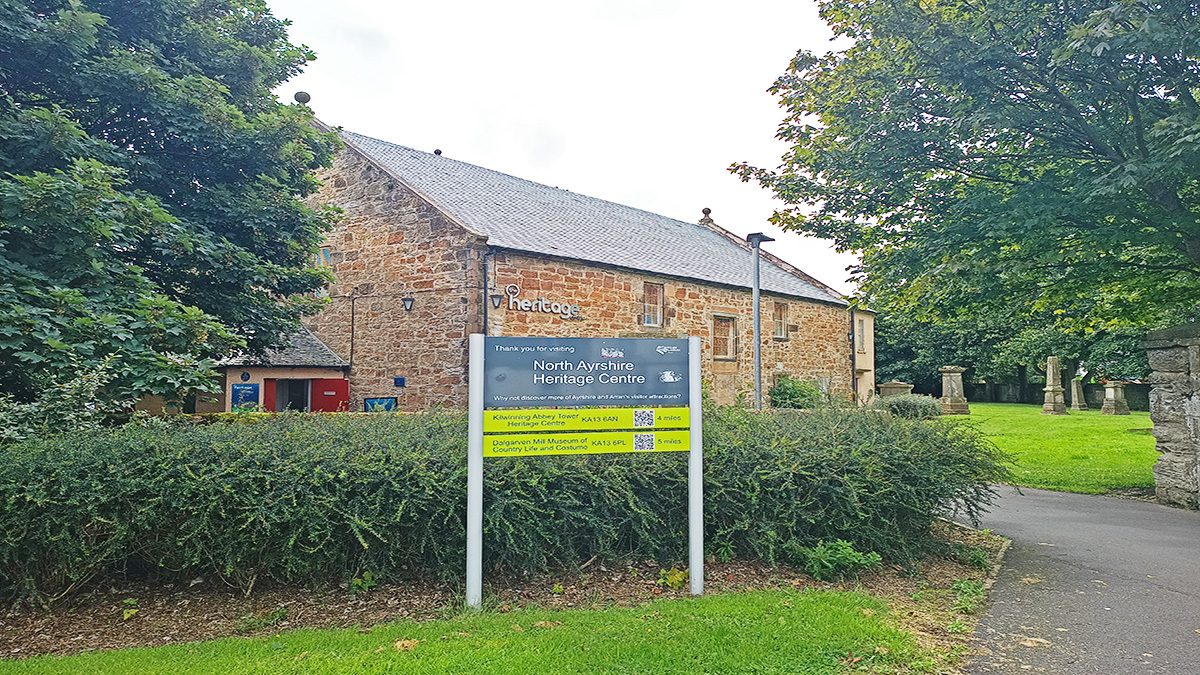The following blog post was kindly written for us by one of our student volunteers, Julia Kahn.
At the North Ayrshire Heritage Centre, I have had the pleasure of inventorying the costume and textile collection over the past several months. The collection holds many treasures, from Harry Kemp’s costumes to beautiful Ayrshire white work. As a crocheter myself, my favourite items to come across were the crocheted pieces. Seeing the detailed handiwork of crocheters of the past made me feel connected to the craft in a new way. I felt inspired to look into the history of crochet and some of the techniques used in the pieces in the collection.
In contrast to other needlecrafts, crochet is quite modern, with the first published pattern appearing in 1822. Despite its modern advent, the origins of crochet are foggy. Several textile and fibre crafts predating crochet utilise similar techniques, leading scholars to believe that crochet evolved from these crafts. Shepherd’s knitting and Tambour embroidery are both precursors to crochet which use hooked tools to create textile works using stitches similar to modern crochet. Although it is difficult to trace where and how crochet was first invented, crochet was likely first popularised as a stand in for lace. Crochet is less time and labour intensive than other types of traditional lace making. Let’s explore some of the crochet lace in the North Ayrshire Heritage Centre’s collection.
Filet Crochet

Filet crochet was created to replicate filet lace (also called filet brodé, lacis, and darned net lace). The technique uses crochet stitches to create series of open and closed boxes, forming images or text. Early publications including the technique appeared around the 1850s, with ‘The Ladies’ Complete Guide to Crochet, Fancy Knitting, and Needlework’ in 1854 and ‘Treasures in Needlework’ in 1855. Importantly, filet crochet patterns were the first crochet patterns to be published as charts, rather than written or tabulated patterns. Charted patterns were already common in other needlecrafts, like cross stitch and needlepoint. Crocheters could easily reuse other charts to create filet crochet works, perhaps lending to the popularity of filet crochet.
The Solomon’s Knot Stitch

The border of the piece above is made using the Solomon’s knot stitch. This stitch resembles the Solomon’s knot, a motif found across many cultures, thought to originate from Ancient Rome. The Solomon’s knot represents eternity, love, and unity. I was unable to trace the origin of this crochet stitch, but it has been used frequently in crocheted laces in the French and Irish styles. The airy mesh that stitch creates, is beautiful both on its own and when used as a background for more intricate lace designs.
Crochet Pansy Doilies: A piece of Scottish crochet history

Most of the crochet in the collection is white or cream, so it was especially exciting to come across these colourful doilies. The pieces are thought to have been made circa the 1960s. The more recent origin of the doilies and their distinctive design inspired me to search for the pattern or other similar pieces. It turns out these doilies were created following the ‘Pansy Luncheon Set in Mercer-Crochet’ pattern. The pattern was issued by J. & P. Coats Ltd., a Paisely based textile business, making these doilies a piece of Scottish crochet history. A copy of the pattern is held by the South Lanarkshire Museum.
Crochet Lace Accents

Many objects in the collection used crochet as accents and borders on a primarily woven textile. I found this interesting, as I have not seen this often in modern crochet. Usually, I see (and make) entirely crocheted items. The use of crochet in these objects highlights how crochet was seen as a substitute for other forms of lace.
All in all, the objects in the North Ayrshire Heritage Centre’s collection offer a glimpse into the rich, but largely murky, history of the craft. Each of these textiles hold the story of their maker and of crochet as a whole. I hope you enjoyed coming along with me to learn more about crochet through the lens of these beautiful objects.
Sources
Corder, K., 2016. Irish Crochet and Clones Lace: Exploring Lace Making in Crochet. Interweave. URL https://www.interweave.com/article/crochet/irish-crochet-clones-lace-guide/
Karp, C., 2021. Knitting the slipped crochet stitch. Loopholes. URL https://loopholes.blog/2021/02/knit-slip-crochet/
Nehring, N., 2013. A History of Filet Crochet: Creating Pictorial Designs. Piecework Magazine 10–14.
Ohrenstein, D., 2017. Crochet Origins: An Enigmatic Tale. Interweave. URL https://www.interweave.com/article/crochet/crochet-origins-enigmatic-tale/
Olson, L., n.d. Crochet – The Real Definition. The Dilettante Mama. URL https://thedilettantemama.com/crochet-the-real-definition/#origins-of-crochet
Parmee, R., 2025. Discovering Solomon’s Knot Crochet. The Pulled Stitch. URL https://pulledstitch.blogspot.com/2025/01/discovering-solomons-knot-crochet.html
